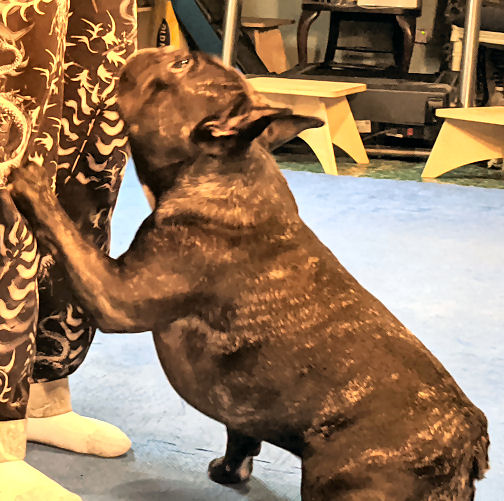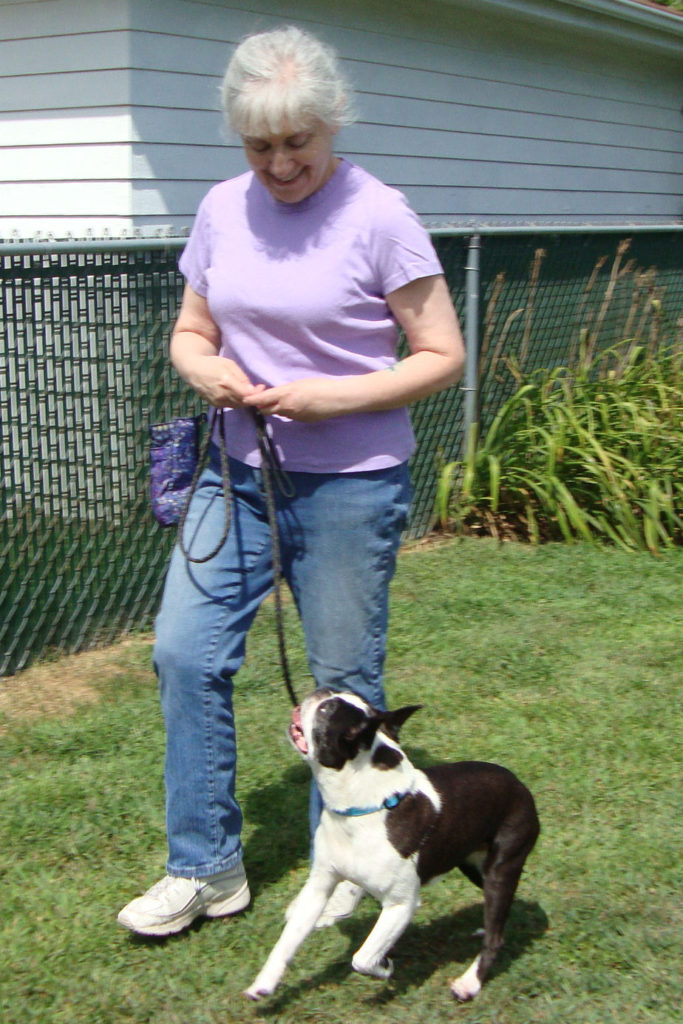
Most dogs have a distinct paw preference, just like people. Unlike people, who are disproportionately right-handed, dogs seem to be evenly divided among lefties and righties, with a significant percentage of ambidextrous pups, too. Have you ever noticed whether your dog is a lefty or righty?
How do you know?
There are lots of different ways of figuring it out. And all of them can turn into another training game. The easiest is to have your dog standing and see which paw, left or right, they use for the first step. Or see which paw your dog uses to hold a bone or other chew toy.
Our favorite game to figure out left vs. right dog preference is to stand with your dog a few feet away from a wall. Holding your dog’s collar, toss a treat against the wall. Tell your dog to get the treat and then call your dog back to you. See which way your dog turns, to his/her right or left, to come back to you.
Gather the data
A single repetition won’t tell you anything about your dog’s paw preference. If you use the treat-toss-turn game, repeat at least 10 times to find out your dog’s “laterality” (left or right pawedness). If your dog turns the same way eight times out of ten, you can assume that’s the side your dog prefers.
There doesn’t seem to be any definitive study on “pawedness” in dogs. And it doesn’t really matter all that much. It does let you know which side is “dominant,” which may help you in evening out your training.
Just like people, dogs can over-develop the dominant side. If baseball pitchers didn’t balance their workouts, their dominant (pitching) arm would be huge in comparison to the other. Just like people, dogs also have a two-sided brain. Working the “off” side both physically and mentally, keeps the individual more fit.
Obedience Bias

In most obedience and rally dog sports, the dog is always on the handler’s left side. This practice has ancient roots and goes back to hunters and warriors needing their right (dominant) hand for their weapons. Their dogs were on the left. While the original purpose no longer applies, the dog-on-left habit continues.
Every so often, it’s great to switch things up. Try heeling with your dog on your right. Your dog may be a bit confused at first, so you may want to use a different word than your usual “heel!” We tend to use “Switch!” to get our dogs into heel position on the right.
You may find it a bit awkward to stick to the rule “Always give treats with the hand closest to the dog,” but remember it. You never want your dog crossing in front of you to get the cookie. They could trip you and both could get hurt.
Balanced Training
Be careful! These days dog trainers who use a combination of punishing corrections and treats are calling themselves “balanced” trainers. That’s not what we mean. Balanced training should be doing exercises and playing games on both sides. What your dog can do on one side, try on the other. When we’re playing games where our dogs are going from one side of the room to the other (Ring Stacking, Put Your Toys Away), we switch sides periodically. That way our dogs get used to seeing movement, and keeping on task through distractions.
Surprising laterality
When you’re doing your Perch Work, your dog may find one direction much more difficult than the other. That’s why we do it. Build up your dog’s proficiency on both sides equally to keep them physically fit and mentally acute.
